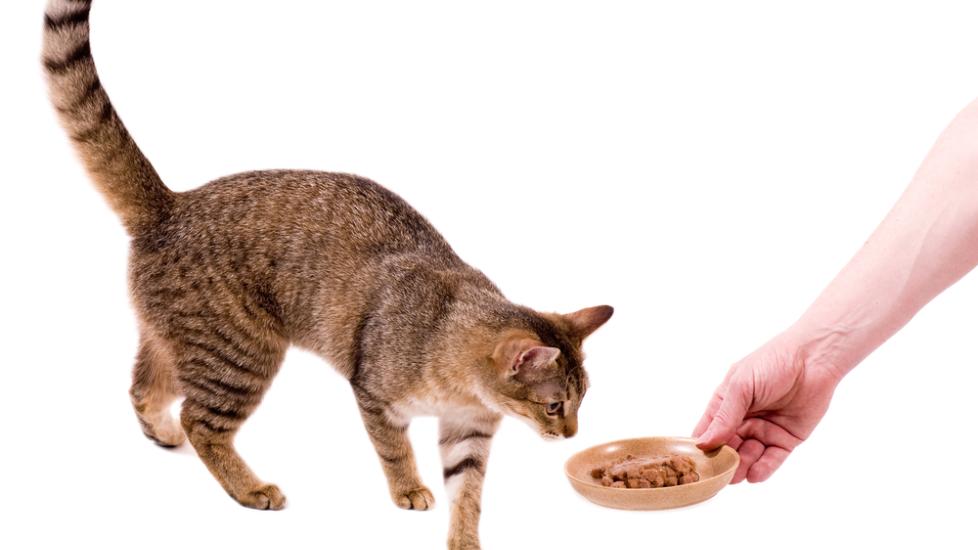6 Healthy Treat Ideas for Cats
by Elizabeth Xu
After a long day at work, chances are you’re happy to go home and play with your cat. We all want to make our pets happy, so your bonding time might include a few extra treats. However, cat experts caution that giving your cat too many treats can be harmful.
“Obesity is a huge problem in both dogs and cats,” says Dr. Rachel Barrack, DVM, a veterinarian and veterinary acupuncturist at Animal Acupuncture. “It has been shown that obesity is linked to major medical problems in both dogs and cats including cancer, degenerative joint disease, type 2 diabetes, high blood pressure, and decreased life expectancy and quality of life. The most commonly seen cause of obesity in pets is overfeeding—particularly overfeeding treats.”
That’s not to say that you can never give your pet treats, of course. But you should think about when you treat and how much you give each time. Giving healthy treats to a cat might seem like the obvious answer, but it’s a little harder to treat cats than dogs, says Dr. Amy Farcas, DVM, a veterinary nutritionist with Veterinary Nutrition Care in California.
“Cats are different,” she says. “They don’t really eat most of what we think would make a good treat for animals.” Most aren’t likely to eat fruits or vegetables either, she said.
So what kinds of healthy treats can you give your cat? Here are six ideas.
Small pieces of lean meat
Cats need an amino acid found in protein, so it’s essential they get enough meat, according to the ASPCA. While a balanced diet is the best way to do this, many cats appreciate meat as a treat, too.
“Some cats are more likely to take pieces of meat as a treat, and I think that’s a reasonable expectation, but there are some cats who will just say, ‘Where’s my kibble?’” Farcas says.
Their kibble
Sure, it might not sound like such a treat to you, but think of it this way: Your cat already enjoys their kibble and this is one way to give them fewer calories.
“Try setting aside some of your dog or cat’s food to allocate as a ‘treat’ throughout the day,” Barrack says. “This will eliminate excess calories. Make sure that all members of the household are on board with the amount to avoid overfeeding.”
Dried liver
Again, cats need protein in their diet, which dried liver has. Of course, the Knox County Humane Society says that this treat should be given in moderation.
Wet cat food
Many cats eat and enjoy dry kibble, but wet cat food can be a good treat option, says the Oregon Humane Society.
Commercial treats
If you enjoy preparing treats for your cat, it can be a part of the bonding experience, Farcas says. But if you don’t, there’s no need to worry that commercial treats are necessarily unhealthy. A cat’s needs are individual, so check with your veterinarian to see what they recommend.
Affection
When you’re craving a late-night snack, a pat on the head will certainly not take its place. Luckily, cats are a little different—they don’t always need a treat to know you love them or that they’ve done something good.
“I understand that treats are a way for owners to show praise and affection but this can also be accomplished through petting, playing, or a long walk,” Barrack says.
Limiting treats
It’s important to keep in mind that cats don’t actually need treats, regardless of how healthy the cat treats may be.
“Even if you’re feeding an item that’s considered to be healthy, it’s still considered an unbalanced food item because it doesn’t provide that whole package that a complete diet does,” Farcas says.
And keep in mind that over treating can actually diminish that healthy diet your cat normally eats: “Most commercial pet foods are balanced in such a way that it is safe and reasonable to give 5-10% of that animal’s daily intake as treats without creating any deficiency in the main part of the diet,” Farcas says.
